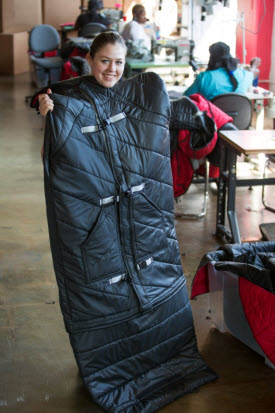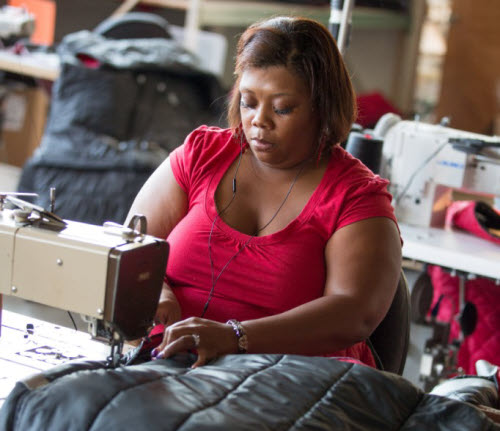Quite a few of our fellow citizens would sum up the solution to homelessness in three short words: “Get a job!” OK, yes, gainful employment would help in many cases, but if you don’t have much in the way of skills, and are maybe even dealing with mental illness, addiction, or other disabilities, that’s easier said than done (and we’re not even discussing those people who are homeless and employed). Many people on the streets need someone to take an interest in their situation, and help them find shelter and build their skills.
Traditionally, these efforts have come from charitable organizations; more and more, though, we’re seeing social entrepreneurs creating innovative approaches to challenges like homelessness. In Detroit, Veronika Scott came up with the idea underlying The Empowerment Plan while a student at the College for Creative Studies. Her concept: a waterproof, self-heating coat that could also serve as a sleeping bag. She didn’t stop with a product to give out, though: a part of her plan involved putting homeless women to work actually making these coats. Veronika lanuched her idea in late 2010, and since then has put eight homeless women to work full time (and also helped them find homes). They turn out 150 of the coats each month.

But what kind of material would you use to make such a coat? Wouldn’t it be expensive? Probably, but The Empowerment Plan has found a supporter in a local company you probably know: General Motors. The auto maker had 2000 leftover yards of Sonozorb™, a sound-absorbing material GM uses in its Chevy Malibu and Buick Verano sedans. The material turned out to be a good fit for The Empowerment Plan’s coat, so the company donated the whole lot – enough to make 400 coats – to Veronika and her organization. This isn’t the first time excess Sonozorb™ has been put to good use: it was also used for cleaning up oil from the 2o10 BP oil spill in the Gulf of Mexico.
No doubt, the most humane thing we can do for the homeless is to get them off the street. Our politics won’t let us do that directly on a large scale, so The Empowerment Plan’s concept of employing a few homeless people to keep many others warm and dry seems like a good strategy. If you know of other social enterprises like this – whether they’re getting assistance from Fortune 500 companies or not – let us know about them.
Image credits: General Motors under a Creative Commons license

